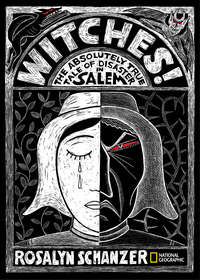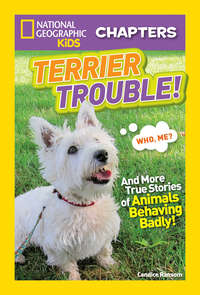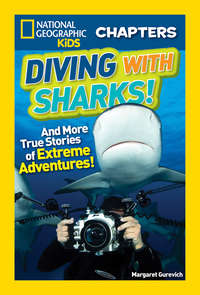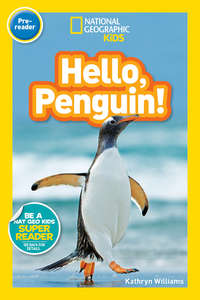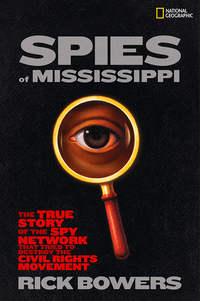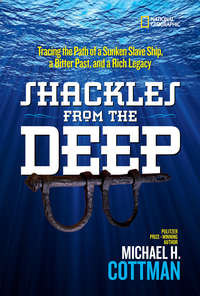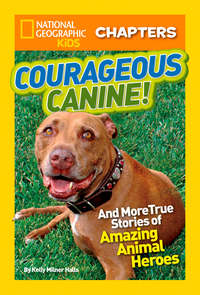
Полная версия
National Geographic Kids Readers: Woof!


Children are naturally curious about the world around them, and
curiosity is a powerful motivation for reading. Studies show that
informational reading is critical to success in school. National
Geographic Kids Readers allow you to feed your children’s interests
and create readers who not only can read, but also want to read!
To sustain children’s excitement about reading, we have created a
special program called NATIONAL GEOGRAPHIC KIDS SUPER READERS.
As kids read each National Geographic Kids Reader, they cross
off its picture on a free National Geographic Kids Super Readers
poster that parents can download from kids.nationalgeographic.com/ superreaders.
Throughout the process, kids and parents go to the website and
download specially designated prizes that reward their effort. Kids
can have even more reading fun online, with lively book-related
activities, quizzes and games, fascinating excerpts, and sneak
previews of upcoming books.
The National Geographic Kids Super Readers program appeals to
kids’ love of accomplishment while providing them with incentives
to keep reading. When the reading experience is fun, children learn
more and achieve more. What could be better than that?
Sincerely,
Mariam Jean Dreher
Professor of Reading Education
University of Maryland, College Park
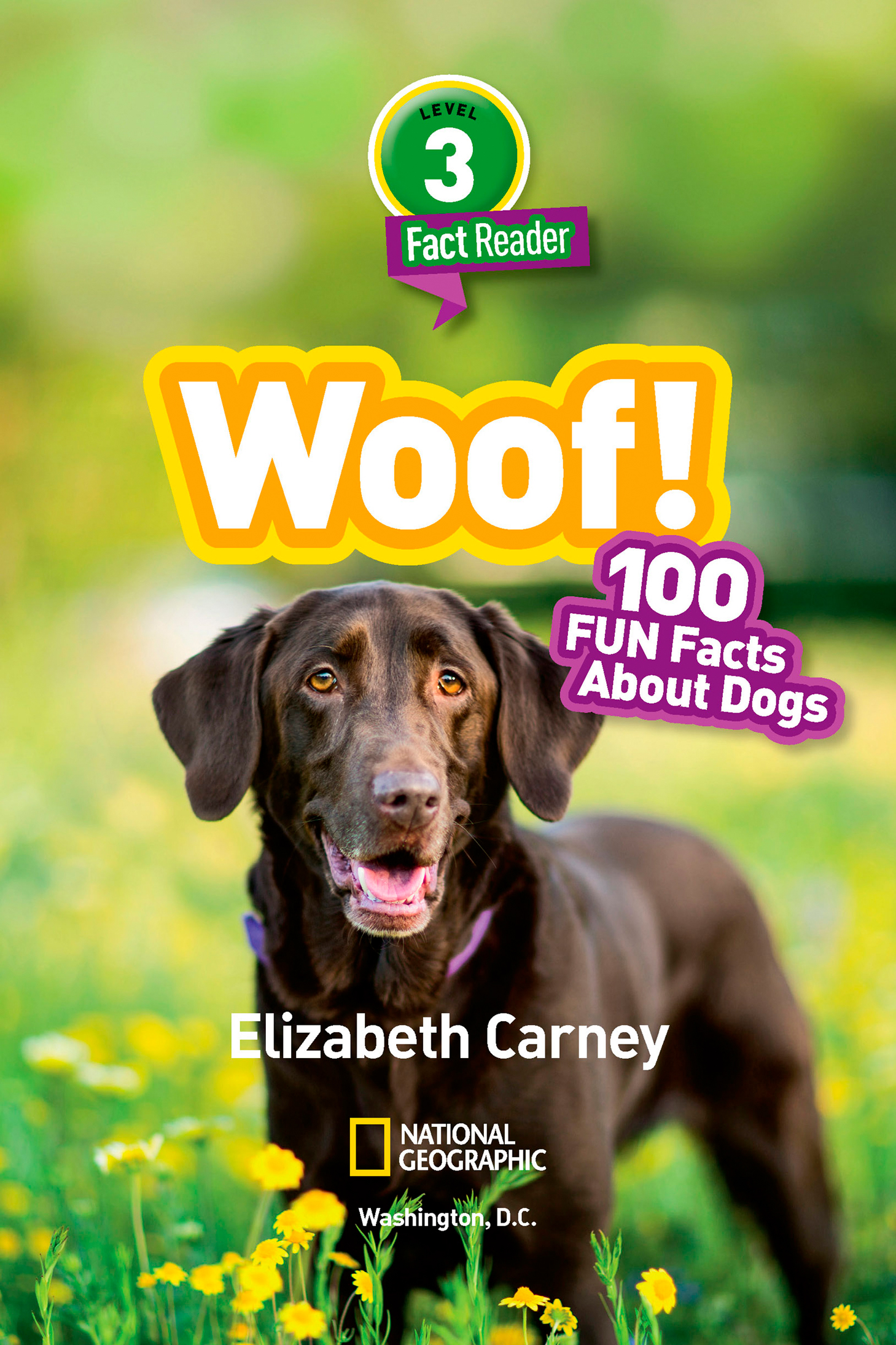

In memory of Kerry and her unwavering love, loyalty, and comfort. Thank you for being the best dog a girl could have. —E.C.
Copyright © 2017 National Geographic Partners, LLC
Published by National Geographic Partners, LLC,
Washington, D.C. 20036. All rights reserved. Repro-
duction in whole or in part without written permis-
sion of the publisher is prohibited.
NATIONAL GEOGRAPHIC and Yellow Border Design
are trademarks of the National Geographic Society,
used under license.
Designed by Amanda Larsen
Library of Congress Cataloging-in-Publication Data
Names: Carney, Elizabeth, 1981- author. | National
Geographic Society (U.S.)
Title: Woof! : 100 fun facts about dogs / Elizabeth
Carney.
Other titles: 100 fun facts about dogs | One hundred
fun facts about dogs | National Geographic kids.
Description: Washington, DC : National Geographic,
[2017] | Series: National geographic kids. Fact
readers | Audience: Ages 6-9. | Audience: K to
grade 3.
Identifiers: LCCN 2016051363 (print) | LCCN
2017017797 (ebook) | ISBN 9781426329098 (e-book)
| ISBN 9781426329074 (pbk. : alk. paper) | ISBN
9781426329081 (hardcover : alk. paper)
Subjects: LCSH: Dogs–Miscellanea–Juvenile litera-
ture. | Children’s questions and answers.
Classification: LCC SF426.5(ebook) | LCC SF426.5
.C3745 2017 (print) | DDC 636.7002–dc23
LC record available at https://lccn.loc .gov/2016051363
Photo Credits
GI = Getty Images, SS = Shutterstock
Cover, Gary Randall/Kimball Stock; 1, Purple Collar
Pet Photography/GI; 2, Elizabeth Carney; 3, Napat/
SS; 4 (UP), Sashkin/SS; 4 (CTR & LO), Eric Isselée/
SS; 5 (UP), Chirtsova Natalia/SS; 5 (CTR LE),
Matthew Mazzotta; 5 (CTR RT), Ermolaev Alexander/
SS; 5 (LO), kali9/GI; 6–7, Alan Jeffery/SS; 8, Holly
Kuchera/SS; 9, John Knight/GI; 10, Stefan Cioata/
GI; 11 (UP), Photology1971/SS; 11 (LO), Erik Lam/SS;
12, ESB Professional/SS; 13, Sharon Morris/SS; 14,
Eric Isselée/SS; 15 (UP RT), alexei_tm/SS; 15 (UP
LE), Alzbeta/SS; 15 (LO LE), BoulderPhoto/SS; 15 (LO
RT), igorr1/GI; 16, Amanda Nicholls/SS; 17, Susan
Schmitz/SS; 18, jasam_io/GI; 19, andresr/GI; 20,
LorenzoPatoia/GI; 21, Westend61/GI; 22, Alessandra
Sarti/imageBROKER/Alamy Stock Photo; 23 (UP
LE), 4kodiak/GI; 23 (UP RT), Jaromir Chalabala/SS;
23 (LO), Tim UR/SS; 24–25, Marcel Jancovic/SS; 26,
VitCOM Photo/SS; 27 (UP), Elizabethsalleebauer/
GI; 27 (LO), Eric Isselée/SS; 28–29, Spaces Images/
GI; 29, Gary Randall/KimballStock; 30, saraidasilva/
GI; 31, MisLis/GI; 32–33, Zave Smith/GI; 32 (INSET),
Javier Brosch/SS; 34, PM Images/GI; 35, Sebastien
Micke/Paris Match via GI; 36 (LE), s5iztok/GI; 36 (RT),
Kuttig-People/Alamy Stock Photo; 37, Daniel Grill/
GI; 38, Justin Tallis/AFP/GI; 39 (UP), Anton Luhr/
imageBROKER/Alamy Stock Photo; 39 (CTR), Pete
Oxford/Minden Pictures; 39 (LO), goodluz/SS; 40,
Brian Edwards; 41, Jerome Delay/AP Photo; 42,
wundervisuals/GI; 43, Humane Society of Missouri;
44 (UP), GI; 44 (CTR LE), REN JF/FEATURECHINA/
Newscom; 44 (CTR RT), Eric Isselée/SS; 44 (LO),
japape/SS; 45 (UP), Steve Mann/SS; 45 (CTR), dien/
SS; 45 (LO), Ermolaev Alexander/SS
National Geographic supports K–12 educators with ELA Common Core Resources. Visit natgeoed.org/commoncore for more information.
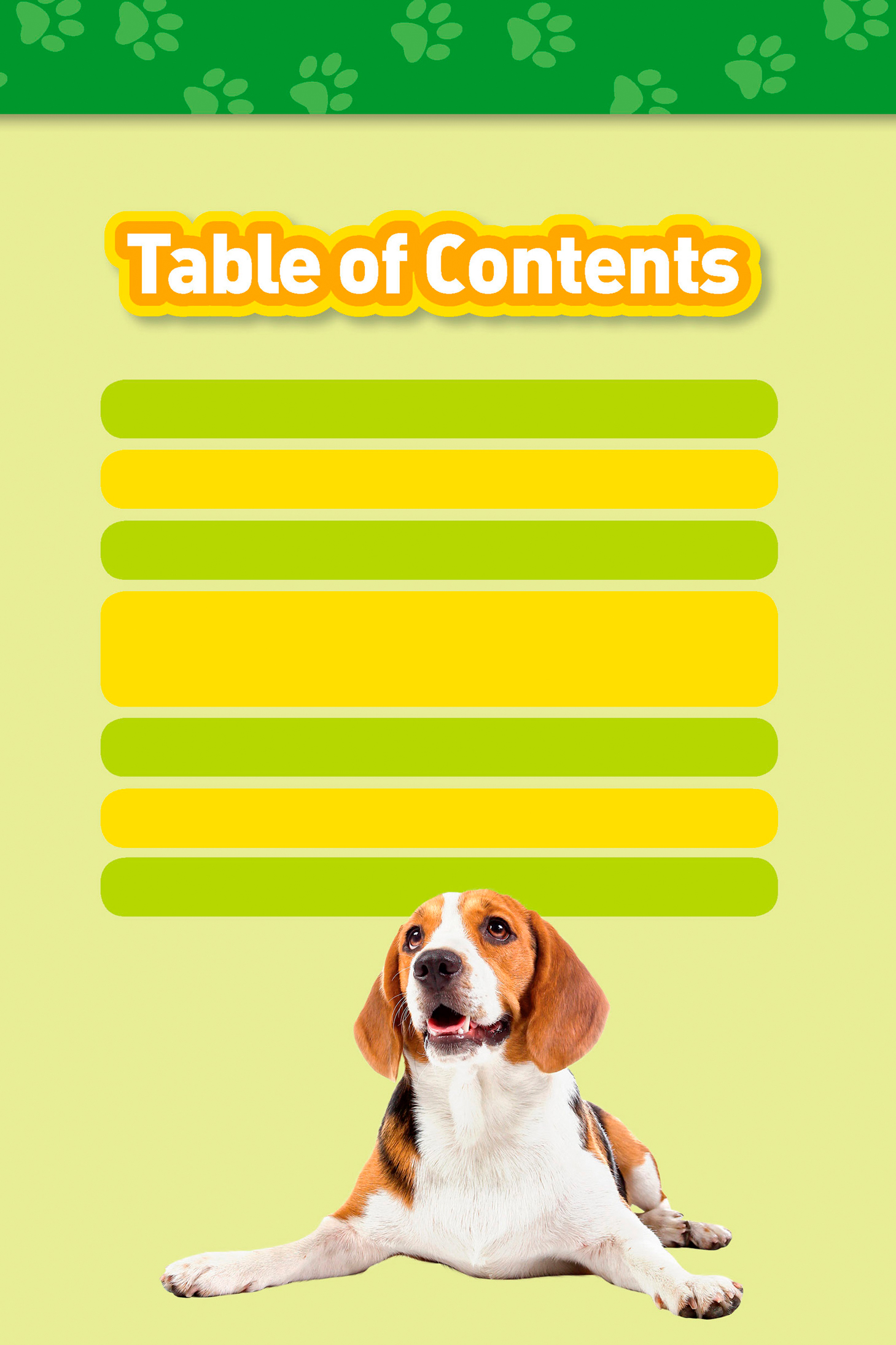
25 Cool Facts About Dogs 4
Chapter 1: Wolf to “Woof” 6
Chapter 2: Dogs Decoded 12
Chapter 3: Dogs at Home and on the Job 26
25 More Facts About Dogs 44
Dog Facts Roundup 46
Index 48

Unlike their other canine relatives,
African wild dogs have four toes
per paw, instead of five.
Dogs mostly sweat through
glands on their paws.
The longest-lived dog
on record lived
29 years.
Dogs aren’t the only animals that bark.
Deer, monkeys, and some types of birds
also make barking noises.
A golden retriever named Augie
held five tennis balls in her mouth
at one time, setting a world record.
The world’s fastest dogs—
greyhounds—can run about
45 miles an hour.
Dogs don’t enjoy being hugged. For a dog,
putting a limb over another animal is
a sign of power and control.
Dog poop isn’t just gross to step in.
A type of parasitic roundworm that can
make humans sick is found in more
than one-third of dog droppings.
Dogs have three eyelids!

Humans have five times
the number of
taste buds as dogs.
Dogs sleep an
average of
12 to 14 hours a day.
Twelve dogs were aboard the Titanic. Three survived—two Pomeranians and a Pekingese.
Puppies that have little contact with
humans during their first three months
usually won’t make good pets.
From 1924 to 2006, it was
illegal to have a pet dog
in Reykjavik, Iceland.
A park in Cambridge, Massachusetts, U.S.A.,
has lampposts powered by dog poop.
When drinking water, dogs cup the
back of their tongues to transfer
water from the bowl into their mouths.
Poodles get their name from the German word for
“to splash dog.” They were bred to retrieve birds
from lakes and ponds for their hunter owners.
A dog belonging to ancient
Egyptian royalty got its own
tomb near the Pyramids at Giza.
Don’t be fooled by a hyena’s
doglike looks. They’re actually
more closely related to cats.
Basset hounds have the longest
ears of any breed. They measure
between 7 and 10 inches.
For a dog, the scent of another dog’s poop contains information about that dog’s health and mood.
The world’s tiniest dog
is shorter than the length
of a toddler’s hand.
The Chihuahua was named
after the state in Mexico where
the breed originated.
Petting a dog can help you feel relaxed
and reduce your blood pressure.
Farm dogs in ancient Greece wore spiked collars
to protect their necks from wolves as they
defended their flocks.
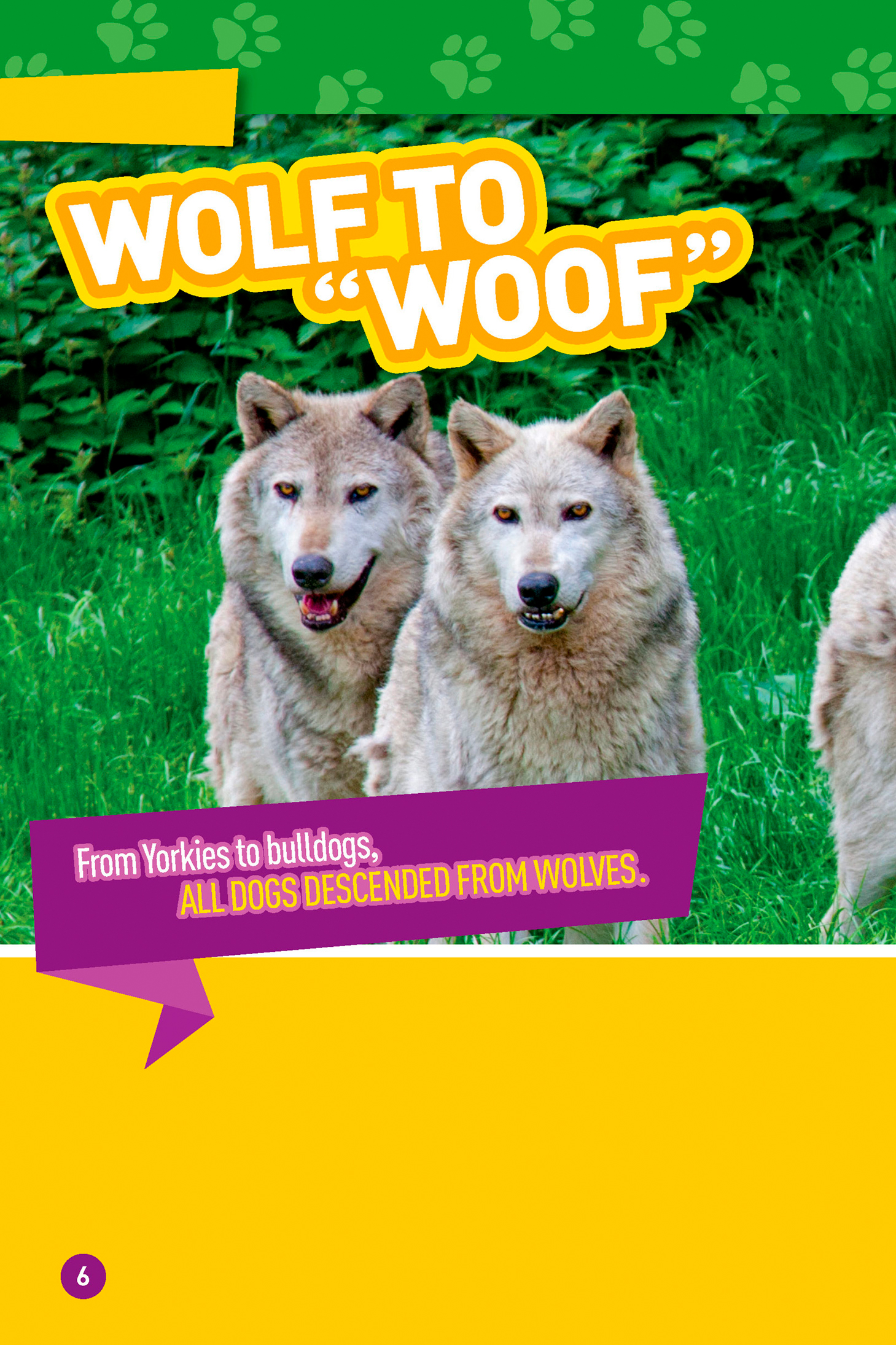
CHAPTER 1
Dogs are our slobbery, hairy,
loyal “best friends.” As they lick
our faces and drop tennis balls in our
laps, it’s hard to believe that they used to
be wild animals.
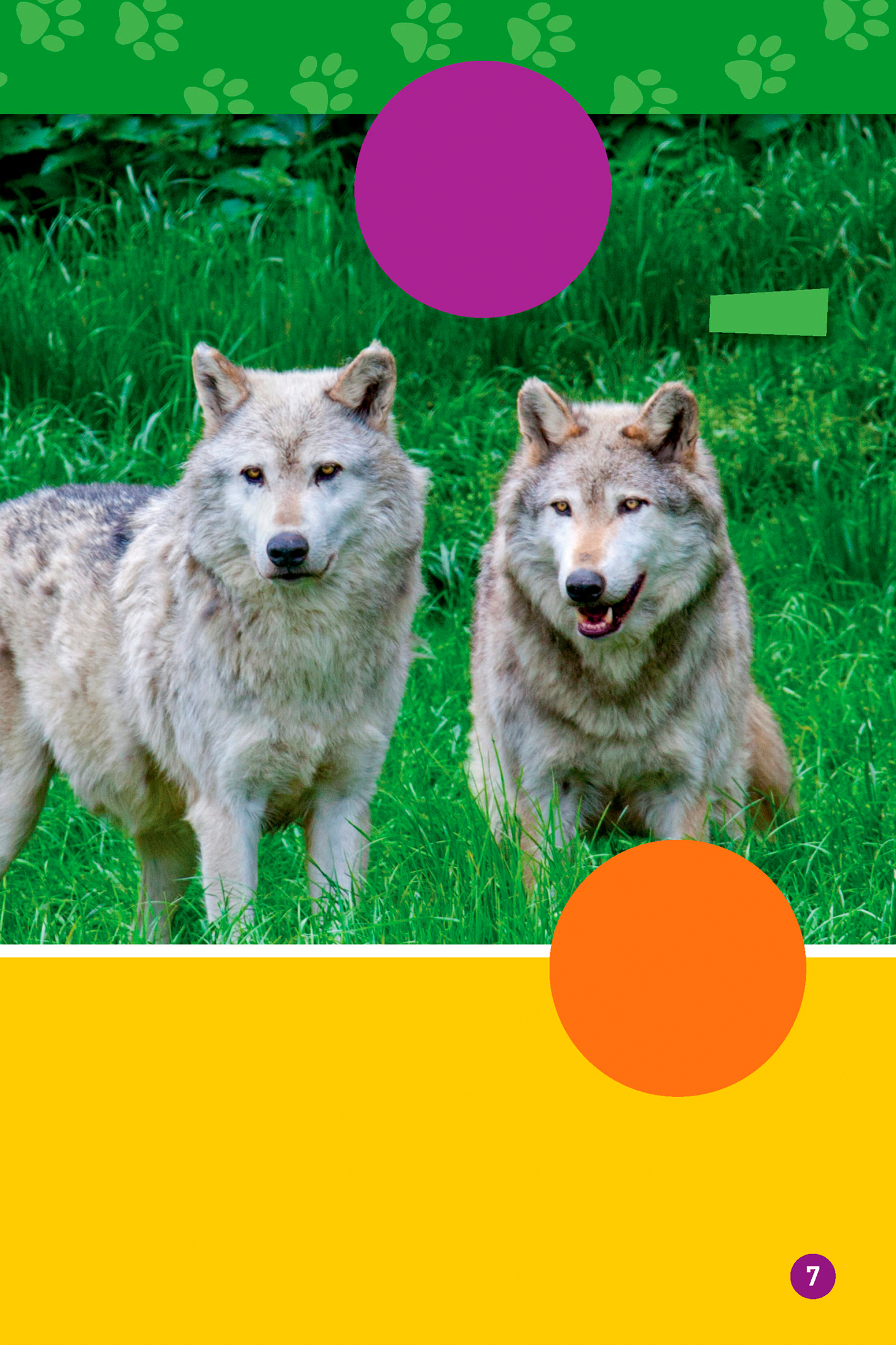
Wolves live in
family groups, called
packs. There can be UP
TO 10 WOLVES IN
Конец ознакомительного фрагмента.
Текст предоставлен ООО «ЛитРес».
Прочитайте эту книгу целиком, купив полную легальную версию на ЛитРес.
Безопасно оплатить книгу можно банковской картой Visa, MasterCard, Maestro, со счета мобильного телефона, с платежного терминала, в салоне МТС или Связной, через PayPal, WebMoney, Яндекс.Деньги, QIWI Кошелек, бонусными картами или другим удобным Вам способом.




